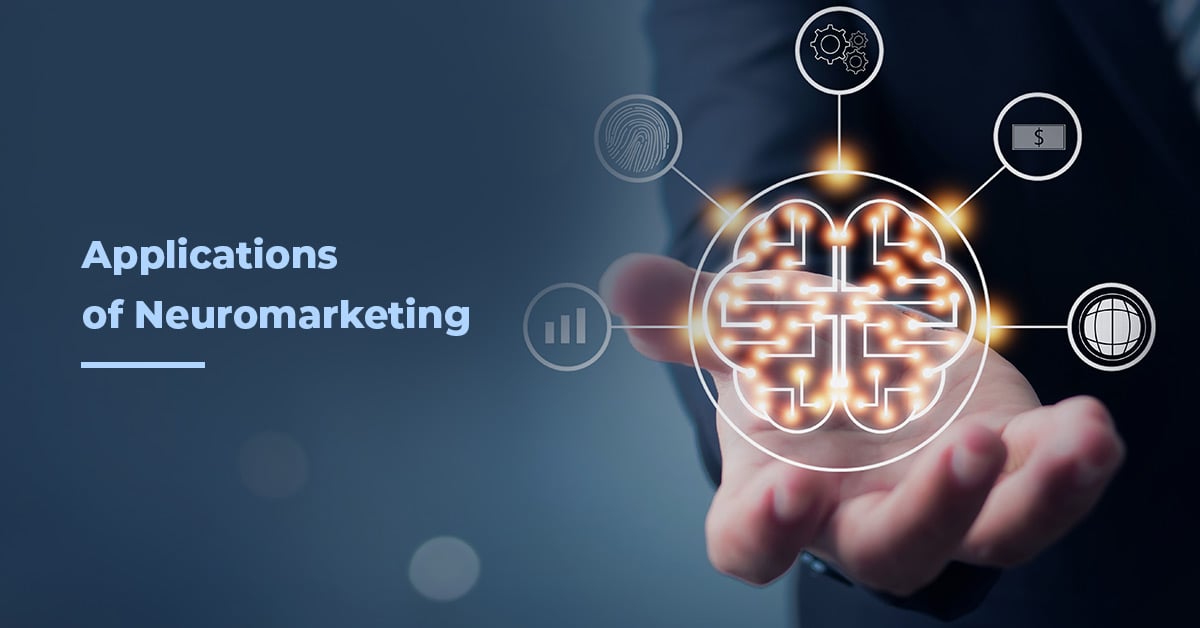Figuring out why a customer makes a specific purchase decision or prefers one product or brand over another is key to shaping product and marketing decisions. With every brand fighting for consumer attention, it is crucial to understand what neurological triggers prompt consumer behavior. Though interviews and surveys can give brands an idea about consumer attitude and preferences based on their responses, it may not give a complete picture of the underlying consumer behavioral patterns.This is where neuromarketing techniques find their application.
Understanding The Inner Workings Of The Brain Through Consumer Neuroscience
Though still an emerging field, neuromarketing techniques help to understand how the brain processes information, arrives at decisions and forms preferences. By decoding consumer behavior at such a deeper level, brands can create experiences that resonate with the target audience at a neurological level to create a lasting impact.
Techniques Used In Neuromarketing
Emotion tracking
Emotions often play a deciding factor while making purchasing decisions. Tapping into these emotional triggers for products and solutions can effectively predict future purchase outcomes. With the advancement in technology, emotions displayed by consumers are now tracked by brands through various emotional tracking tools available at their disposal. The idea is to build more authentic connections with consumers.
Facial recognition technology ( aided by computer vision) can deduce consumer reactions to external stimuli. Eye-tracking technology can reveal exactly where a person is looking and for what duration while engaging with brand offerings. Voice analysis and speech recognition software can scrutinize tone and pitch to interpret the emotions expressed through verbal communication.
Functional Magnetic Resonance Imaging
Another interesting technique used in neuromarketing is Functional Magnetic Resonance Imaging ( fMRI). It is used by brands to observe and analyze neural responses to marketing stimuli, such as advertisements or product presentations. The insights gained from fMRI readings offer valuable insights about which brain regions are activated during specific tasks or experiences. Brands can investigate how consumers perceive and process information related to brands through this technology, revealing subconscious reactions that influence consumer choices.
Electroencephalography
Electroencephalography, or EEG, used in neuromarketing, involves measuring electrical activity in the brain to understand consumer behavior. This technique provides real-time insights into consumers’ cognitive and emotional responses to various marketing-related stimuli such as product designs, color palettes, ads, logos or branding elements. Brands utilize EEG to identify specific attention, perception, engagement, and emotional arousal patterns. These patterns are then analyzed to devise effective marketing strategies.
Galvanic Skin Response
Through Galvanic Skin Response (GSR), brands and researchers can measure changes in the electrical conductance of the skin when subjected to emotional stimuli. Brands get real-time insights into consumers’ level of emotional engagement and arousal levels while interacting with various marketing elements. It provides a nuanced understanding of what consumers go through emotionally through the entire buying journey. Again, such information is primarily utilized to build campaigns for maximum impact.
Applications Of Neuromarketing

- Improving retail and in-store experience: Consumer neuroscience and neuromarketing is applied to boost retail and in-store experiences and improve the overall shopping environment. By deploying techniques like eye-tracking, facial recognition, and biometric measurements, retailers gain insights into customers’ reactions to store arrangements, product placements, and in-store displays. Understanding how the brain responds to stimuli helps to improve color schemes, lighting, checkout experience, music and audio design to create an engaging shopping experience.
- Ad design and testing– Using eye-tracking technology, EEG and fMRI, brands can understand how the brain responds to visual elements, colors, and messaging in advertisements. This knowledge helps create ads that trigger specific emotional responses ( like nostalgia, curiosity, surprise, joy etc.), capture attention, and ultimately improve brand recall.
Neuromarketing is an excellent mechanism to increase ad effectiveness and check if the message the brand intends to convey through them is getting through. For digital campaign evaluation, neuromarketing provides insights into emotional responses on how campaigns resonate emotionally, visually, and interactively within specific digital contexts. It can also reveal consumer brand perception changes after exposure to ad campaigns.
- Product design and packaging– Eye-tracking technology, EEG can give brands a fair idea as to how a consumer’s brain reacts to shapes, designs, colors and textures. Such detailed insights aid in the creation of packages that evoke positive emotions, grab attention and improve the overall user experience. Heat maps aid in visualizing the areas of the package design that bring out neurological activity, which can be used to refine package design for maximum impact. Display visibility assessment through neuromarketing assesses how the brain responds to different visual elements on the packaging. It shows which design features improve visibility and grabs consumer attention, ultimately affecting purchasing decisions.
Using neuromarketing tools for attribution testing can help to understand how consumers attribute value to different elements of a product’s design and packaging. Such tools measure neural responses, emotional involvement with the product as well as memory retention associated with specific package features. Decoding these responses gives an idea about which packaging elements contribute most significantly to consumer perception.
In terms of product design, understanding the neural aspects of consumer perception helps to work on designs that align with their subconscious preferences. This builds a stronger bond with the consumer.
- Brand building: Understanding the neural underpinnings of consumer perception makes brands create strategies that authentically engage with customers while leaving a lasting imprint in the minds of the consumers. Neuromarketing enhances brand building by revealing how consumers respond to logos, colors, and taglines. Emotion-driven content creation helps to build a strong bond with the consumer beyond a business transaction.
- Point-of-sale experiences: Through consumer neuroscience and neuromarketing, businesses can optimize the consumer’s journey during the final stages of a purchase by using color psychology, sensory stimuli, and persuasive messaging that appeals to the customer. Understanding how the brain responds to various stimuli allows businesses to curate their point-of-sale strategies to bring out positive emotions, trigger emotions leading to impulse buying, and create a stronger long-term brand connection.
Applying neuromarketing techniques responsibly
Though neuromarketing is still in a nascent stage, brands have to be conscious from now on to ensure responsible and respectful practices while using such techniques. Respecting the customer’s privacy is paramount and obtaining consent from them before using such mechanisms is non-negotiable. Transparency is essential in disclosing the use of neuromarketing techniques to consumers for building long-term trust. Brands must also be careful to safeguard sensitive information and adhere to data protection regulations while using and interpreting data collected through neuromarketing tools.
Conclusion
Brands can embrace techniques that deduce the neurological aspects of consumer behavior in an ethical manner to gain deeper insights into the drivers of decision-making. It’s evident that understanding the intricacies of the human brain is the way forward for brands to create lasting marketing strategies that stand out from the competition.







